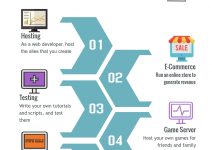 A number of well-known and respected web hosting providers have fallen prey to very sophisticated large scale DDoS attacks over the years. As some attacks continued on for hours, their clients became increasingly frustrated, because their clients in turn were posing some very tough questions of them.
A number of well-known and respected web hosting providers have fallen prey to very sophisticated large scale DDoS attacks over the years. As some attacks continued on for hours, their clients became increasingly frustrated, because their clients in turn were posing some very tough questions of them.
Communication is Key to Mitigating Churn
How well received these providers’ efforts were to mitigate these attacks hinged around communications with their clients – essentially meaning how well they kept their clients informed. A good number of clients fully understand the complexities of fighting off these attacks, but when their business began to suffer from prolonged outages, some of them started scrambling to find new providers.
The Frequency of Attacks has Increased
Cybercriminals have increased the frequency of their attacks, and now have intensified their efforts with Ransomware attacks. These attacks involve encrypting data on a government or corporate website and then demanding ransom money, usually Bitcoin, to unlock it. The combination of these two types of attacks are the dark side of the Internet – its criminal underbelly.
Focus on the Web Hosting Industry
Ransomware is essentially a criminal way to exhort money, but why DDoS attacks, especially in the web hosting industry? Providers are simply looking to offer decent hosting services to thousands of individuals and businesses, and provide employment to people needing jobs. The cybercriminals that perpetrate these attacks are a very sick underbelly of society and belong behind bars.
Dealing with Ransomware
The consensus is that recovering data that has been encrypted by a ransomware attack is very close to impossible (without actually having the decryption keys). One solution is to have a remote backup of your site, meaning you need to think ahead and be proactive instead of reactive.
Prevention is Key to Blocking Ransomware Threats
While backups are a viable solution, there are measures that you can take to prevent attacks, such as authenticating your inbound email. Why? Email has been and will continue to be a common way to distribute malware. Attackers are experts at spoofing emails that contain malicious attachments, that when opened, spread their garbage on the victim’s system.
By validating email origins before they’re delivered, using sender identity technologies like SPF, DMARC and DKIM, firms can shield themselves from spear phishing and other threats.
Taking email protection one more step
While sender authentication helps, businesses also need to scan all stored, outgoing and incoming mail to detect threats that may have slipped through the cracks.
Why it’s important to monitor file activity
Ransomware poses a threat not just to individuals within an organization, but to the enterprise at large, including shared files. Attackers accomplish this executing rapid file overwriting, but fortunately there are programs available to detect this type of malicious activity and minimize it. Early detection is the key, placing the infected site in quarantine mode.
Be very aware of malicious advertisements
Attackers are very adept at distributing ransomware, especially via ads targeting specific users based on their habits. These very often are quite dangerous as they provide clues to the attackers about their potential victims.

BROUGHT TO YOU BY PROLIMEHOST
We’ve been in the web hosting industry for over a decade, helping hundreds of clients succeed in what they do best and that’s running their business. We specialize in Virtual Private Servers (VPS) and dedicated servers, with data centers in Los Angeles, Denver & Singapore.
VPS SERVICES: LIGHTNING FAST SSD VIRTUAL SERVERS
Our Virtual Private Servers all feature high performance Xeon processors and SSD storage in a RAID10 configuration to optimize your server’s performance, which dramatically enhances visitor experiences on your site.
That speed is backed by unparalleled 24/7 support, featuring both outstanding response AND resolution times to maximize your uptime.
Now is the time to join the ProlimeHost virtual private server revolution.
DEDICATED SERVERS: BACKED BY A 99.9% SLA NETWORK UPTIME GUARANTEE
We only use enterprise-class hardware in our dedicated servers and offer a four (4) hour hardware replacement. Throw in IPMI for remote management, support for public and private networks, free operating system (OS) re-installs, and SATA, SAS & SSD (including NVMe) storage. Call 1-877-477-9454 or contact us. For everything from gaming, AMD, GPU, EPYC and AI servers to cheap dedicated servers, we’re here to help.
ASIA OPTIMIZED NETWORK: IMPROVING CONNECTION SPEED AND QUALITY
Procuring an Asia optimized server improves the connection speed and quality between the server and the users in Asia or China. This can reduce latency, packet loss, jitter, and bandwidth issues that can affect the performance and reliability of the server and the applications hosted on it. For more information, please call 1-877-477-9454 or contact us.
- Increase Your Online Sales | Some Tips - July 2, 2025
- Overstock USA Dedicated Server Sale, Over 300 servers on SALE at Dirt Cheap price!! - June 30, 2025
- Five Additional Ways to Use Your VPS - June 27, 2025


